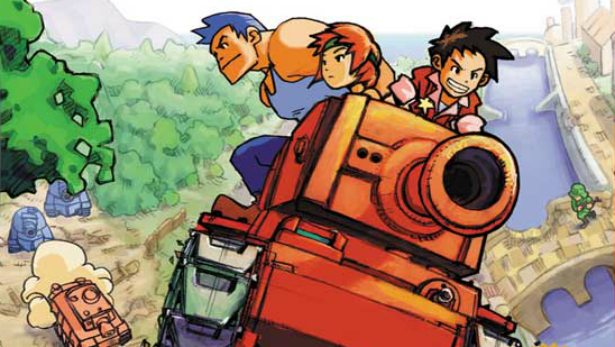The Nintendo 3DS’ 5th Anniversary — A Short History

Can you believe it’s been five years since Nintendo launched the 3DS in America as of today? It’s true! You can apply this to any anniversary, especially if you’re old enough that each such occasion makes you come to grips if your own mortality like me. The mere mention of this particular one made me recall the insurmountable level of excitement which existed for the system before its launch…at least, for a time.
The concept of the 3DS sounded ingenious when Nintendo first explained it in early 2010, a perfectly timed revolution to capitalize on the 3D fad popularized by various movies — especially Avatar. Watching those required wearing special glasses to simulate the experience, but the 3DS promised to replicate this by not requiring them. Even before its E3 showcase that year, this factoid already made people say “wow,” a popular prerequisite for Nintendo since Wii first arrived on the scene. That the system was following in the footsteps of the overwhelmingly successful Nintendo DS also helped establish early excitement, a system mostly responsible for making touchscreen gaming popular before it became the new normal.

Those who watched Nintendo’s E3 2010 conference saw the company unveil a convincing slate of software for 3DS, to convince onlookers that it was poised for the same success its predecessor achieved. They impressed the audience with new titles like Kid Icarus: Uprising, Mario Kart 7, and Paper Mario 3DS (which underwent drastic changes before it became the Paper Mario: Sticker Star people know and possibly like), and remakes of fan favorites like The Legend of Zelda: Ocarina of Time 3D and Star Fox 64 3D. Meanwhile, the promise within projects like Super Street Fighter IV: 3D Edition, Resident Evil Revelations, and Metal Gear Solid: Snake Eater 3D helped show how third-party developers were on board and the hardware’s graphics power. Sure, two of those weren’t original projects, but an early show of third-party support is always welcome — especially for a Nintendo platform.
The 3DS unveil left the impression that the system would sell gangbusters, but that sadly didn’t reflect reality when it arrived. In the interim between its unveil and launch, excitement for it dwindled considerably. During that time, the thought of how far off some key software was had time to sink in, along with the realization that its launch and launch window would be barren. This was also a time where the looming specter known as mobile gaming hovered over the dedicated handheld market with a harrowing figurative scythe; 3DS’ market penetration was bound to be difficult, as many found their smartphones were good enough for gaming on the go. Of course, Nintendo initially pricing the device at a whopping $250 didn’t help matters a bit, which limited its early adoption to very dedicated fans of the company. It took an aggressive price drop to $170 and an ambassador system around half a year after its launch before units started moving from shelves at a steady pace, which came alongside some quality software.
Worse yet, some previously unveiled software also stumbled. SSFIV 3D Edition was a fine launch title, but it sadly wasn’t given anywhere near as much attention as its console counterparts. And what initially appeared to be a full-blown remake of Metal Gear Solid 3 turned into a port, thanks to a misleading (though very impressive) older video. (Rumor has it Konami wasn’t impressed with 3DS’ early sales, and slashed the budget.) Despite those tribulations, especially regarding handheld gaming’s place in a world where mobile continues to encroach the market, they thankfully didn’t prevent its software lineup from developing.

This is a Nintendo system, so its highlights are unsurprisingly the company’s first-party software, which has arguably been better than even their DS lineup. The system marked the first time a handheld received a 3D Mario title in Super Mario 3D Land, which fits that bill despite what some cynics say. The DS was also given two disappointing touchscreen-based Zelda games; but along with ports of the aforementioned OoT and Majora’s Mask 3D, 3DS received a superlative follow-up to A Link to the Past with A Link Between Worlds.
There was also aforementioned franchise revival Kid Icarus: Uprising, which lived up to the excitement the original trailer established, provided you found a comfortable control method. And though it never received a single Advance Wars title like the system’s predecessors, 3DS was where Fire Emblem was given new life. Some have misgivings about the direction the newer titles have ventured in, but the core games remain enjoyable. When it came to first-party support, the mantra of no one doing it better than Nintendo held true, especially for handhelds.
Third-party support suffered a bit due to developers realizing there wasn’t much of a place for high-budget software, following sales disappointments like Resident Evil Revelations. Others moved their support to the more profitable mobile and browser markets following the DS’ fade from the market. But that’s not to say 3DS didn’t receive a fair amount of support from them, especially from Japan. The biggest of these was clearly Monster Hunter, but games from Atlus, Bandai Namco, and Square Enix helped keep the system afloat for support outside Nintendo’s efforts.

Things could have gone better for 3DS, but regardless of those tumbles in a volatile worldwide market, it did pretty well. It’s more than earned the “Happy Birthday” being given to it today. The system continues to sell thanks to marketing and support from Nintendo, including hardware upgrades. The 3DS XL was expected, but more surprising was the 2DS, a small and cheap iteration aimed towards younger audiences. But the New 3DS and New 3DS XL iterative upgrades helped it to fully follow in its predecessor’s footsteps.
Of course, nothing here is implying that the 3DS has reached the end of its road. In fact, it will likely live a little longer than Wii U. Games like Kirby: Planet Robobot and Pokémon Sun and Moon are due from Nintendo, likely along with other to-be-announced titles. Meanwhile, third-party partners have offerings like Monster Hunter Stories (Capcom), Etrian Odyssey V (Atlus), and Dragon Quest XI (Square Enix) coming down the line. Additionally, some localized titles like both Dragon Quest VII and VIII (Square Enix, though with Nintendo as the publisher), Monster Hunter Generations (Capcom; a localization of Monster Hunter X) and 7th Dragon III: Code VFD will arrive in the near future. Don’t count the system out yet.
Well, until the company releases their next handheld, rumored to share architecture with its NX console big brother. Whatever road they’ll take with the device, Nintendo has their work cut out for them in getting more people — parents, especially – to purchase a new dedicated system. I hope Nintendo has carefully planned how they’ll both of their upcoming platforms in today’s markets, so let’s hope for the best. We wouldn’t want these options to go away, right? Right.





